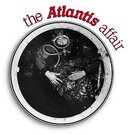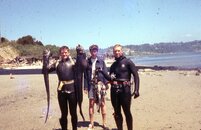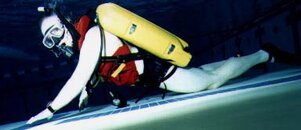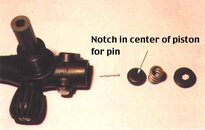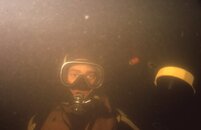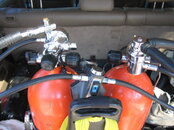This is an interesting discussion, but I'm going to throw a bit of information out and see what comes of it.
First, about the original Calypso regulator that both Keller and Jacques Cousteau used. It has the exhalation diaphragm in the center of the LP diaphragm, and it was too small in diameter for U.S. Navy approval. So the U.S. Navy never used it, but the USAF did (I will soon post on Pararescue and SCUBA Diving thread about that). But it was a regulator breakthrough, and both U.S. Divers Company and AMF Voit produced it (the Voit Viking 40 regulator). I dived the Voit version of several years, and loved that regulator.
Now, I have not bought a new regulator in years and years. In part, that's because I collect old diving regulators, and rehab them for my diving. I learn their in's and out's, and figure out which one is the best. But it is also because I haven't found any current diving regulator that can beat the A.I.R. 1 regulator by Scubapro, and I still have two of those that I occasionally dive when circumstances are trying in the water (heavy current, with a lot of work). My look at current regulators is that you cannot get a larger exhaust opening than the A.I.R. 1 regulator provides, which is the whole demand diaphragm. The inhalation resistance is also virtually nill, and it is better than the Scubapro Pilot regulator, according to Scubapro. I have also run two first stages into the second stage, which no current production regulator has the ability to do. The U.S. Navy gave Scubapro an award for the Pilot regulator, and with the A.I.R. 1 it's successor, I don't think any regulator will ever beat it; may approach or tie it, but I doubt any would beat it...just my opinion, though.
Now, one last thought--the combination of the A.I.R. 1 second stage on a U.S. Divers Company UDS-1 is probably the best single scuba that was ever designed from a breathing standpoint. If I can get my UDS-1 going again, it will again be mated with the A.I.R. 1 regulator by Scubapro (still a problem getting those tanks hydroed, since they have a very huge, non-standard opening and need an eddie current test). But the UDS-1 valve openings and integrated first stage provided the best performance of any scuba I have ever used.
SeaRat
PS, the photo of me and Bob LeBarr of the Salem Aqua Club with our wolf eels and fish (sea bass and a ling cod) was taken in 1963, when I was using my AMF Voit Viking 40 regulator.
First, about the original Calypso regulator that both Keller and Jacques Cousteau used. It has the exhalation diaphragm in the center of the LP diaphragm, and it was too small in diameter for U.S. Navy approval. So the U.S. Navy never used it, but the USAF did (I will soon post on Pararescue and SCUBA Diving thread about that). But it was a regulator breakthrough, and both U.S. Divers Company and AMF Voit produced it (the Voit Viking 40 regulator). I dived the Voit version of several years, and loved that regulator.
Now, I have not bought a new regulator in years and years. In part, that's because I collect old diving regulators, and rehab them for my diving. I learn their in's and out's, and figure out which one is the best. But it is also because I haven't found any current diving regulator that can beat the A.I.R. 1 regulator by Scubapro, and I still have two of those that I occasionally dive when circumstances are trying in the water (heavy current, with a lot of work). My look at current regulators is that you cannot get a larger exhaust opening than the A.I.R. 1 regulator provides, which is the whole demand diaphragm. The inhalation resistance is also virtually nill, and it is better than the Scubapro Pilot regulator, according to Scubapro. I have also run two first stages into the second stage, which no current production regulator has the ability to do. The U.S. Navy gave Scubapro an award for the Pilot regulator, and with the A.I.R. 1 it's successor, I don't think any regulator will ever beat it; may approach or tie it, but I doubt any would beat it...just my opinion, though.
Now, one last thought--the combination of the A.I.R. 1 second stage on a U.S. Divers Company UDS-1 is probably the best single scuba that was ever designed from a breathing standpoint. If I can get my UDS-1 going again, it will again be mated with the A.I.R. 1 regulator by Scubapro (still a problem getting those tanks hydroed, since they have a very huge, non-standard opening and need an eddie current test). But the UDS-1 valve openings and integrated first stage provided the best performance of any scuba I have ever used.
SeaRat
PS, the photo of me and Bob LeBarr of the Salem Aqua Club with our wolf eels and fish (sea bass and a ling cod) was taken in 1963, when I was using my AMF Voit Viking 40 regulator.
Attachments
Last edited:




